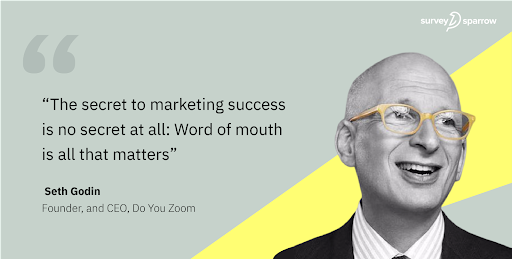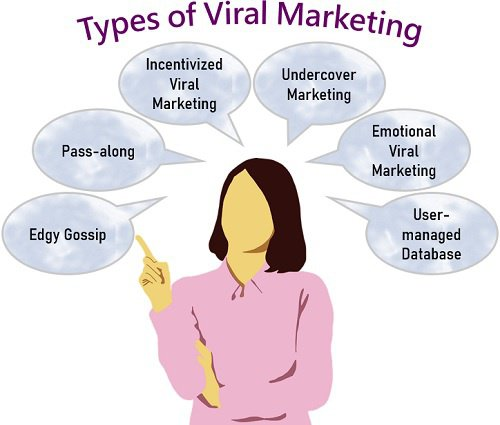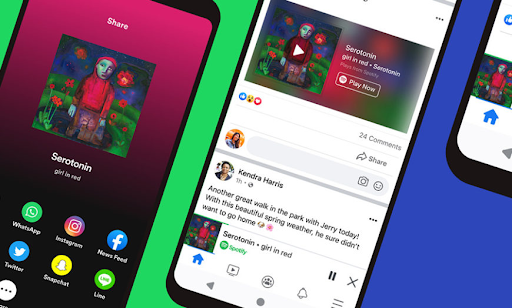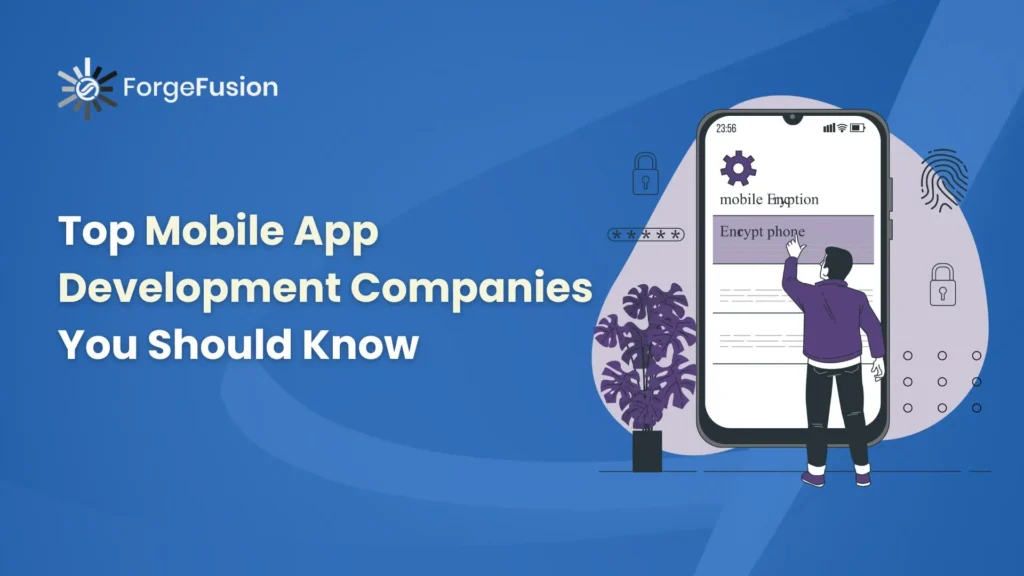Due to the emergence of digital media, the term ‘viral marketing’ has become widespread. Many entrepreneurs are using it without even knowing its real meaning. So in today’s article, we are going to introduce you to the world of Viral Marketing, its real meaning, examples and other details. So let’s begin.
What is Viral Marketing?
Viral marketing refers to a marketing technique which involves organic or word-of-mouth information about a brand with an intention to spread at an increasing rate. Marketing is said to be ‘viral’ when it reaches the point where it is being shared among the public at large rather than just within the ambit of the target audiences.
Top 10 Industries That Need Digital Marketing to Skyrocket in 2022

Digital media has helped to a large extent to make random content viral. Users also help in spreading the message of the marketer or making it viral through their social media networks. Social media networks play an important role in spreading a message due to their broad reach, fast speed and easy to use features. With tools like Instagram Stories, Facebook, and YouTube sharing videos and images to a wider audience has become easy. And with apps like Hootsuite, scheduling, analyzing, and managing this content across platforms is now more efficient than ever, making it easier to capitalize on trends before they fade.
How to start viral marketing:

- Align your viral attempts with your business goals – Many times companies are not sure why they want to go viral. Aligning your viral intent with your main business goal will help you create meaningful content, thus getting viral easily.
- Know what resonates with your followers – If you know what echoes your followers, then you can easily create or curate viral content. To know that, you can monitor a few social media metrics like keyword traffic performance, audience engagement, clicks and reach, demographic data, etc. Knowing each of these metrics can give you an insight into which content part has shareable potential.
- Creating optimised content – A well-optimised content is easy to share. For easy sharing by the user, you can provide different sharing platforms, give away freebies, ask queries which can get viewers to think and talk, etc.
- Provide incentives to those who share your content – Offer to provide freebies to those who share your content. For example, if you are sending your content to your email list, then add an option to refer friends and promise to reward the email subscriber who refers a new subscriber. This will encourage users to keep sharing your message, making it viral.
- Create emotions – You may hire a singer to send your message out melodiously. Anything that inspires positivity, is humorous and offers solutions to fear an agony, is good to catch the emotions of the viewers. You can follow the growth hacking technique to create emotion.

- Make your content easy to digest – People find viral content more interesting if they are in form of images and videos and thus share them. You will get more shares for a blog video rather than a text message.

What Is Influencer Marketing? The Ultimate Blueprint to Develop an Effective Strategy
- Increase use of hashtags – The use of attractive hashtags in your campaign can be a smart move which can make the campaigns more visible and easy to share. Investing your time in creating hashtags is worth tracking the success of your campaigns. With the help of hashtag analytics, you can look into other relevant hashtags used by your audience while you measure your performance.

- Make your content human – Viral content is organic, personal and relatable. Marketing through originality is essential to reach young millennials who are the main source of getting messages viral. Making your content human will remove its corporate taste and thus make it more shareable.

Viral marketing strategies:
There are many types of messages you can create in viral marketing. Marketers should target one of the following types to attract huge traffic and improve their brand visibility.

- Emotional – Viral campaigns which are inspiring and show positive vibes are more attractive to the users. Such a viral campaign may target happiness, nostalgia, pride or agony. Humour, excitement are a few positive emotions and guilt, agony, sadness are negative emotions, both can be used to cause sharing.
- Planned – Campaigns with well-planned strategies have higher possibilities of going viral.
- Incentive – Campaign which offers rewards to people who share a higher rate of getting attracted by the users.
What Is Event Marketing: an Ultimate Guide & effective Strategies in 2022
- Luck by chance – Viral marketing has many key elements which lead to their success. Luck/chance is another such element. The success of such campaigns is unpredictable. An ad may unpredictably resonate with your target audience. Some ads may go viral without that being the primary goal.
- Buzz – A viral ad must create a buzz to grab the attention of the users. Even people who have not seen the ad in their eyes may have at least heard about it from others due to the buzz around the ad campaign.
Viral marketing techniques:
There is no particular method which will make your marketing campaign a success. But below are some proven techniques, which can increase the success rate of your marketing strategies.
- Grab their attention – User witnesses huge amounts of content every time they open the web, whether on desktop or on mobile devices. So to grab their attention, you must understand their needs and act accordingly. Including a visual element in your digital marketing content will be useful for you. Your strategies should be on par with the changing trends. For example, 2019 saw a viral campaign where the image of an “egg” became insanely popular over Instagram, because of its weirdness and hilariousness.

- Engage your audience – Your content will go viral if it encourages its audience to get involved. Your content can include a CTA option telling the users how to get in touch with you, on receiving your message. Successful viral campaigns include opportunities for audiences to like, share and comment.
- Create emotional content – Viewers of your content will get engaged well if your content touches their hearts and respects their emotions. You may create content which will appeal to your sense of nostalgia. Your viral marketing strategy should help the audience feel something that spurs them to action.
What is Meme Marketing & How to Develop Meme Marketing Strategies?
- Messages in the content should be easy to understand – A viral campaign should have a message that can be summed up in a short sentence or a phrase. Having more than one CTA will reduce the overall effectiveness of your campaign. A short message is approachable. Overloading your social media text with hashtags, can lead to a cluttered look and distract the user from the main message.
- Set goals and objectives – A viral campaign must be focused on your brand. A successful campaign has well-designed marketing objectives which can improve your visibility among higher audiences. Research on previous campaigns of your competitors can help you set realistic goals.
How is viral marketing different from guerilla marketing strategy:
Guerilla marketing is the art and science of breaking the conventional marketing rules detouring the traditional rules, i.e. its aim is to ambush the viewer and build publicity. Viral marketing is basically digital word-of-mouth marketing, i.e. it is all about users spreading your message organically and instantly.

Examples of viral marketing:
- Zoom virtual background challenge – Covid-19 pandemic made people sit back at home for personal and professional affairs. This is when Zoom, a video conferencing platform, came up with a great social media campaign. In March 2020, Zoom introduced its ‘Virtual Background Competition’. The remote workers could participate and share videos/ images using the Zoom virtual background feature. Winners were to be awarded exciting prizes. This campaign brought in new users and introduced them to the insights of the platform.

- Apple iPhone shot – With the launch of iPhone X, the iconic brand Apple put up a campaign ‘Shot on iPhone’ to promote their lovely cameras.

- Dove real beauty sketches campaign, 2004 – The purpose of this campaign was to encourage women to love themselves. In their video marketing campaign, it showcases an artist creating a sketch of a woman as described by her and another as described by someone else. The message was to believe in confidence and it became viral. Dove’s in-depth study about womanhood, led them to use real women rather than mannequins in their campaign.

What Is Mobile Marketing: an Ultimate Guide, Strategies, & Examples 2022
- Twitter launch campaign – On the launch ceremony in Austin (Texas), the startup company Twitter negotiated with the organisers to put up large screens around the venue of the ceremony. The screens showed real-time attendees with Twitter accounts, participating in the campaign to promote the brand. This enhanced the reputation of Twitter and could drive in new subscribers. Overall it was a very successful viral marketing campaign. You can also increase twitter followers through evergreen strategy.
How to Create Successful LinkedIn Marketing Strategies to Grow Your Business?
- Spotify co-marketing with Facebook – Ever wondered what made Spotify such a great success in a short span of time? Founded in 2008 Spotify started with providing free services to UK customers. In 2011, it co-marketed with Facebook to solidify its position. With this, a personal playlist could be published on the Facebook page of the user and at the same time, another user could listen to it with just a single click. A single collaboration with social media made this startup company go viral and gained customers.

Advantages and disadvantages of viral marketing:
| Pros | Cons |
| Low cost | N/A |
| Vast reach | N/A |
| Can yield success in a short span of time | N/A |
| Shows creativity | Negative Creativity can harm the brand |
| N/A | Negative word-of-mouth Low virality |
| N/A | Hard to measure |
| Helps in brand building | N/A |
| Lessens the possibility of the brand coming across as invasive | N/A |
Conclusion:
Marketing is a key element for a business to succeed. Now that you understand the concept of viral marketing and its elements, you can apply them to make your brand go viral. A brand campaign should focus on spreading the brand message. Thus Viral marketing has changed the entire landscape of digital marketing.
FAQs related to viral marketing:
-
What is viral marketing?
Viral marketing is a business strategy which uses a digital media platform to promote a product/ service by making content viral. It makes people share the ad with others thus making them viral.
-
Why is Viral Marketing important?
It is important because it helps to reach a huge target audience in a short span of time which can generate sales and filled the goal.
-
How do you make money if your video goes viral?
To make money, you must monetise your video by making the subscribers pay to view the ad or allow a company to advertise to your audience in exchange for some fee. Another way to earn money is by licensing the video and allowing a third party to use it.



